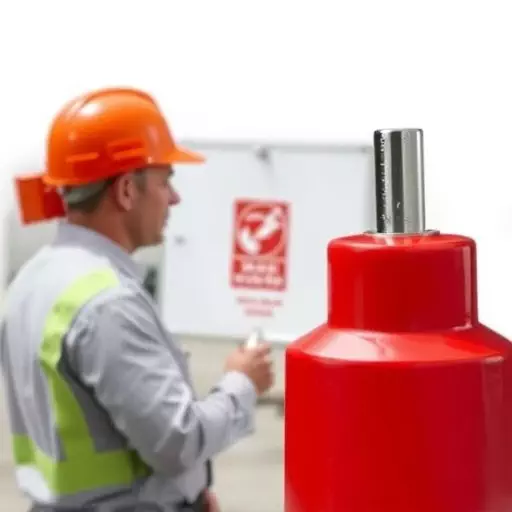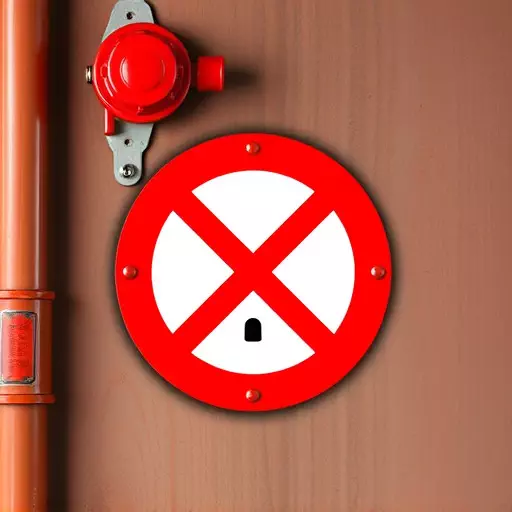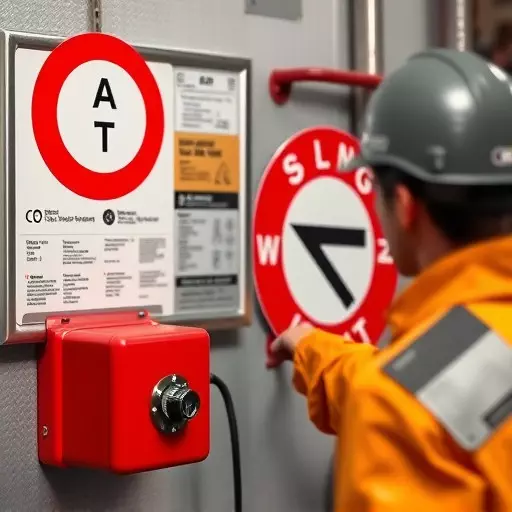Lockout/tagout (L/T) is a critical safety procedure mandated by OSHA in the US to prevent accidents during equipment maintenance. It involves de-energizing machinery using locks and tags. Understanding L/T requires knowledge of energy control procedures, lock types, and proper implementation. Training is vital for routine maintenance, emergency scenarios, fostering safety culture, and adhering to OSHA standards. OSHA's emphasis on L/T underscores its commitment to workplace safety, especially in industries with energy sources. Robust energy control procedures, regular training, and meticulous labeling are key to compliance, reducing risks, and preventing accidents. Comprehensive L/T compliance training equips employees to safely implement energy control measures, comply with OSHA standards, and foster a culture of workplace safety.
“Ensure safe workplace practices with a comprehensive guide to Lockout/Tagout (L/T) techniques. This article offers an in-depth look at OSHA’s role and their stringent lockout tagout standards, vital for preventing accidents during equipment maintenance. We explore effective energy control procedures training, emphasizing its importance in compliance. Learn from best practices implementation and avoid common mistakes to foster a culture of safety. Discover the steps to successful lockout tagout compliance training and stay ahead with our expert insights.”
- Understanding Lockout/Tagout: A Comprehensive Overview
- OSHA's Role and Lockout/Tagout Standards
- Developing Effective Energy Control Procedures
- Training and Education for Compliance
- Implementing Best Practices in the Workplace
- Common Mistakes to Avoid During Lockout/Tagout Protocols
Understanding Lockout/Tagout: A Comprehensive Overview

Lockout/tagout is a critical safety procedure designed to prevent accidents and injuries during equipment maintenance and servicing. It involves de-energizing machinery and securing it through methods like locking devices, tags, or other means to ensure no sudden activation occurs while workers perform tasks. This practice is not just a guideline but a mandate enforced by organizations like OSHA (Occupational Safety and Health Administration) in the US, with specific standards and regulations set for lockout/tagout compliance training.
Understanding lockout/tagout goes beyond simply knowing the procedure. It involves recognizing energy control procedures, understanding the types of locks and tags, and learning how to implement them correctly. The process begins with identifying all potential energy sources associated with the equipment, followed by applying appropriate controls like lockouts or tagouts to render the machinery safe. Energy control procedures training is essential for ensuring workers are equipped to handle various situations, from routine maintenance to emergency scenarios, thereby fostering a culture of safety in industrial settings and promoting OSHA lockout tagout compliance standards.
OSHA's Role and Lockout/Tagout Standards

OSHA plays a pivotal role in ensuring workplace safety, particularly in industries where energy sources are involved. Their focus on lockout/tagout (L/T) procedures is no exception. The agency has established comprehensive standards for lockout tagout compliance training to prevent accidents related to energy control devices. These standards aim to safeguard employees from harm when working on or near machinery or equipment that uses electrical, hydraulic, pneumatic, or mechanical power.
The OSHA lockout tagout standards require employers to implement effective energy control procedures training programs. This involves teaching workers how to isolate energy sources before performing maintenance or repair tasks. By employing L/T methods, such as locking out circuits and tagging out equipment, employees can ensure a safe working environment, minimizing the risk of accidents and electrical hazards during energy-related operations.
Developing Effective Energy Control Procedures

Developing effective energy control procedures is a cornerstone of lockout/tagout best practices and vital for maintaining OSHA compliance. These procedures ensure that all personnel involved in servicing or maintaining equipment are protected from unexpected start-ups or energy releases. The process begins with thorough assessment to identify potential hazards associated with each piece of equipment. Once identified, specific energy control measures such as isolating energy sources (lockout), tagging out equipment, and verifying de-energized status must be implemented.
Regular training on lockout/tagout procedures for all employees is essential. OSHA’s lockout/tagout standards provide guidelines that businesses should follow to ensure safety. Comprehensive training equips workers with the knowledge and skills to safely perform tasks, handle emergencies, and maintain a culture of safety in the workplace, thereby reducing risks and preventing accidents related to energy control.
Training and Education for Compliance

Training and education are pivotal in ensuring lockout/tagout (L/T) compliance across industries. Organizations should invest in comprehensive L/T compliance training to equip employees with the knowledge and skills necessary to implement energy control procedures safely and effectively. This training should cover OSHA’s lockout/tagout standards, which provide guidelines for protecting workers from unexpected machine activation during maintenance or repair.
The curriculum must include practical demonstrations of various L/T methods, such as lock and tag placement, use of control measures, and de-energization procedures. Employees should understand the importance of proper communication and coordination when implementing L/T practices to avoid accidents. Regular refreshers and updates on energy control training are essential to keep workers informed about industry best practices and any changes in OSHA regulations.
Implementing Best Practices in the Workplace

Implementing best practices for lockout/tagout (L/T) in the workplace is crucial for maintaining a safe environment and complying with OSHA standards. This involves comprehensive training on energy control procedures, ensuring every employee understands their role during equipment maintenance or repair. Regular L/T compliance training equips workers with the knowledge to identify potential hazards and safely isolate energy sources.
OSHA’s lockout/tagout standards mandate specific protocols for de-energizing equipment, applying locks, and communicating these actions to ensure no one starts up the machinery accidentally. Effective training includes scenarios that mimic real-world situations, allowing employees to practice safe work practices. By adhering to these standards, organizations can prevent accidents, reduce injuries, and maintain a culture of workplace safety.
Common Mistakes to Avoid During Lockout/Tagout Protocols

During lockout/tagout procedures, several common mistakes can lead to accidents and non-compliance with OSHA standards. One of the most frequent errors is failing to involve all relevant personnel in the process. It’s crucial that everyone knows their role and responsibilities, especially when critical energy control procedures are involved. Training is key; ensuring workers receive comprehensive lockout tagout compliance training will help them avoid these mistakes.
Another common pitfall is not properly labeling and securing equipment during the lockout period. Tags should be clearly visible, durable, and specific in indicating the locked-out condition. Additionally, tools and components used in the process must be secured to prevent accidental activation. Energy control procedures training emphasizes the importance of thoroughness and attention to detail to avoid these mistakes, ensuring a safer working environment.


